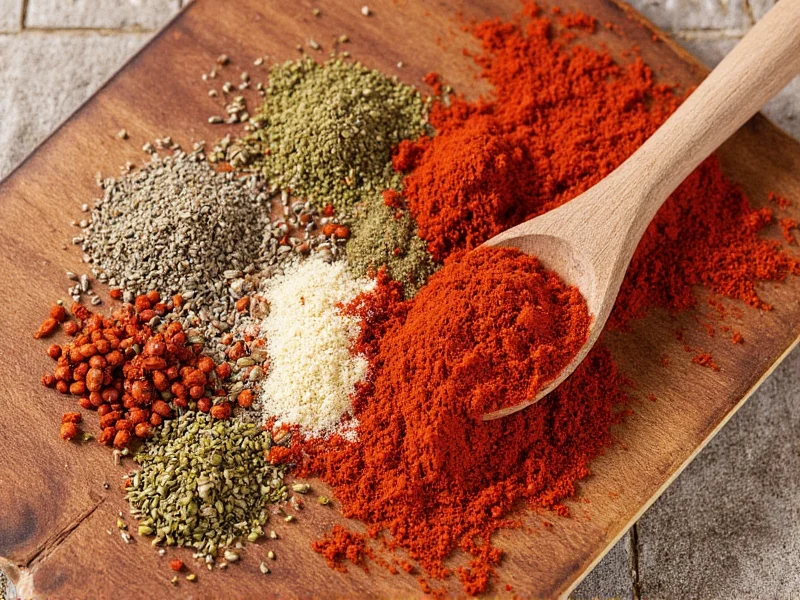Creating exceptional spaghetti sauce isn't just about tomatoes—it's about the thoughtful incorporation of spices that transform simple ingredients into a culinary masterpiece. The right spice combination balances acidity, enhances natural sweetness, and creates that unmistakable Italian-American flavor profile we all love.
The Core Spices Every Spaghetti Sauce Needs
Basil: The Signature Herb
Basil forms the aromatic foundation of traditional spaghetti sauce. While fresh basil provides brighter flavor, dried basil offers more concentrated notes that withstand long cooking times. Add fresh basil during the last 10-15 minutes of cooking to preserve its delicate flavor, while dried basil benefits from being added early to fully release its oils. The best dried herbs for spaghetti sauce include high-quality basil that hasn't lost its vibrant green color.
Oregano: Earthy Depth
Oregano's slightly bitter, earthy profile complements tomatoes beautifully. Dried oregano actually develops more complex flavor than fresh when cooked in sauce—its essential oils are more concentrated and withstand simmering better. For optimal results when making spaghetti sauce from scratch, use 1-2 teaspoons of dried oregano per quart of sauce. Mediterranean oregano varieties provide the most authentic flavor profile compared to Mexican or wild varieties.
Garlic: Flavor Foundation
No spaghetti sauce is complete without garlic. For the most balanced flavor, sauté minced garlic in olive oil before adding tomatoes—this 'blooms' the garlic's flavor compounds without burning. Three to four cloves per quart of sauce provides ideal intensity. Some chefs prefer adding a whole garlic clove that's been lightly crushed, removing it before serving for a more subtle garlic presence. Understanding how to season spaghetti sauce properly starts with proper garlic preparation.
| Herb | Fresh Measurement | Dried Measurement | When to Add |
|---|---|---|---|
| Basil | 1/4 cup chopped | 1-2 tsp | Last 10-15 minutes |
| Oregano | 2 tbsp chopped | 1-2 tsp | Early in cooking |
| Parsley | 2 tbsp chopped | 1 tsp | Last 5 minutes |
| Thyme | 1 tbsp leaves | 1/2 tsp | Middle of cooking |
Supporting Spices That Elevate Your Sauce
Red Pepper Flakes: Subtle Heat
A pinch of red pepper flakes (about 1/4 teaspoon per quart) creates the characteristic gentle warmth in traditional spaghetti sauce without overwhelming heat. Add them early in cooking to allow their flavor to mellow and integrate. For those wondering how to make spaghetti sauce less acidic, the slight acidity from red pepper can actually help balance tomato acidity when used judiciously.
Bay Leaves: The Secret Ingredient
One dried bay leaf added during simmering provides subtle complexity that many professional chefs consider essential for authentic Italian spaghetti sauce spices. Remove the bay leaf before serving as it remains stiff and unpleasant to eat. The aromatic compounds in bay leaves enhance other spices without being detectable as a distinct flavor—this is why many classic recipes include it.
Fennel: Meat Sauce Enhancement
When making meat-based spaghetti sauce, 1/2 teaspoon of fennel seeds complements sausage beautifully. Toast the seeds lightly before adding to release their essential oils. This technique works particularly well for those following traditional Italian-American spaghetti sauce recipes that feature meat.
Timing and Technique Matter Most
The sequence in which you add spices significantly impacts final flavor. Hardy spices like oregano and bay leaves benefit from longer cooking to fully develop their flavors, while delicate herbs like fresh basil and parsley should be added near the end. For optimal results when learning how to season spaghetti sauce properly, follow this progression:
- Add dried herbs, garlic, and red pepper flakes when sautéing onions
- Include bay leaves with the tomatoes at the beginning of simmering
- Stir in fresh herbs during the last 10-15 minutes of cooking
- Always taste and adjust seasoning just before serving
Avoiding Common Spicing Mistakes
Many home cooks make critical errors that diminish their sauce quality. Using old, stale spices creates flat flavor—replace dried herbs every 6-12 months for best results. Adding all spices at once prevents proper flavor development. Over-spicing overwhelms the tomato base, while under-spicing leaves sauce tasting one-dimensional. For those seeking how to make spaghetti sauce taste better without meat, proper spice balance becomes even more crucial.
Regional variations offer insight into authentic preparation. Traditional Italian spaghetti sauce spices tend to be more restrained—focusing on fresh basil, minimal garlic, and high-quality olive oil. American-Italian versions often feature more robust garlic and oregano profiles. Neither approach is 'wrong,' but understanding these differences helps you create the style you prefer.
Perfecting Your Spice Balance
The hallmark of expertly seasoned spaghetti sauce is balance—no single spice should dominate. After adding your spices, let the sauce simmer for at least 30 minutes to allow flavors to marry. Then taste and adjust: a pinch more salt can enhance all flavors, a teaspoon of sugar counters excessive acidity, and a splash of red wine vinegar can brighten dull notes. This approach to making spaghetti sauce from scratch ensures professional-quality results every time.











 浙公网安备
33010002000092号
浙公网安备
33010002000092号 浙B2-20120091-4
浙B2-20120091-4